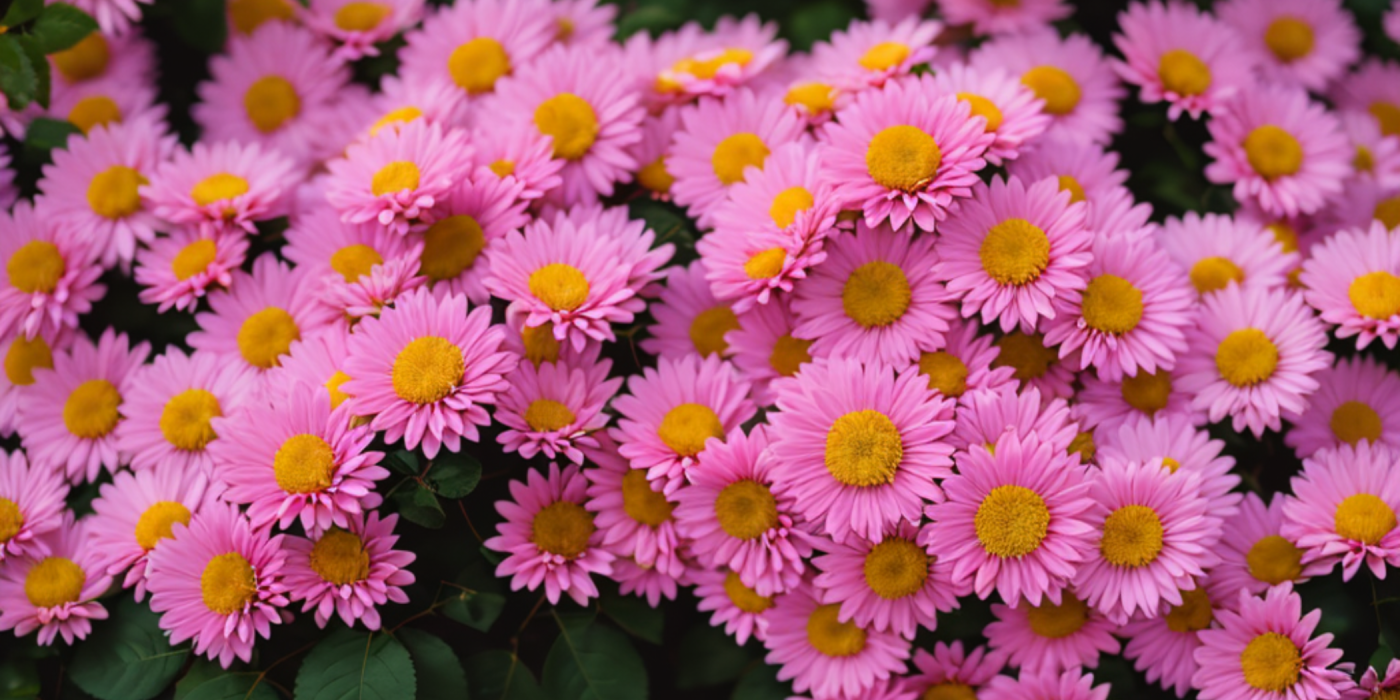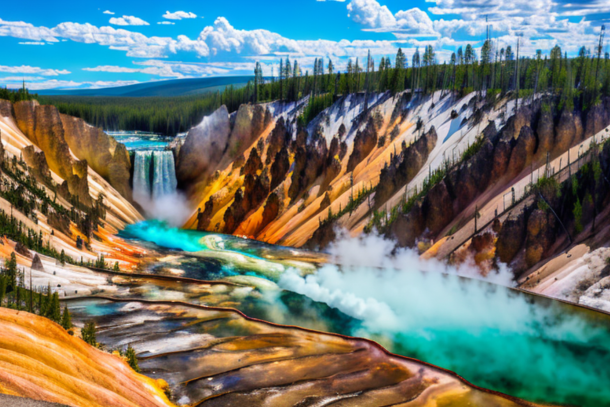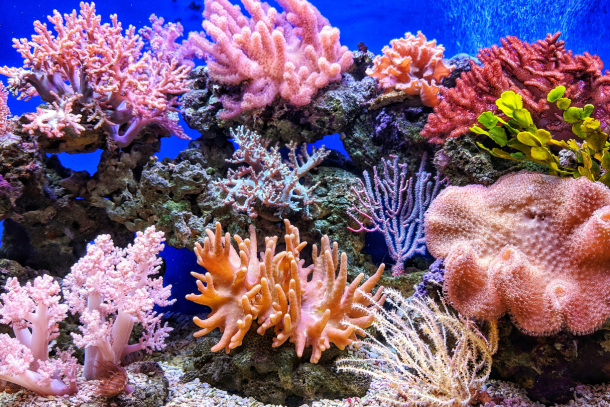Nature Therapy: A Deep Dive into the Healing Power of the Natural World

In the hustle and bustle of our modern lives, it's all too easy to lose touch with the natural world. Yet, every so often, we find ourselves longing for the solace and tranquillity that nature offers. This isn't just happenstance – it's our inherent connection to the environment we originated from. More and more, people are turning to the outdoors as a form of therapy, unlocking a world of benefits for the mind, body and spirit. Welcome to the world of nature therapy.
Exploring the Concept of Nature Therapy
Unravelling Nature Therapy
At its core, nature therapy – also known as ecotherapy – embodies a range of activities and practices that connect us back to nature. The principle is simple yet profound: as humans, our well-being is intrinsically tied to our environment. By immersing ourselves in nature, we can nurture our physical health, enhance mental well-being, and kindle emotional tranquillity.
An Overview of This Journey
In this exploration, we'll delve deep into the concept of nature therapy. We'll unpack its origins and principles, revealing why this therapeutic approach has garnered such interest in recent years.
Understanding Nature Therapy: A Journey into Healing and Wellness
What is Nature Therapy?
Nature therapy, also referred to as ecotherapy or green therapy, is a broad term that encapsulates various practices aiming to improve an individual's wellbeing through interaction with the natural world. Its origins can be traced back to several indigenous cultures around the globe that valued the healing powers of the natural environment. The fundamental principle of nature therapy is the belief that humans are part of the natural world and that our physical, emotional, and mental health can significantly benefit from a close relationship with nature.
The Science Behind Nature Therapy
Over the years, the benefits of nature therapy have moved beyond folklore and anecdotal evidence to solid scientific research. For instance, studies have shown that spending time in nature can lower blood pressure, boost the immune system, and reduce levels of stress hormones. Mental health benefits are equally impressive, with nature therapy being linked to reduced symptoms of anxiety, depression, and post-traumatic stress disorder.
A particularly noteworthy study published in the Proceedings of the National Academy of Sciences in 2015 revealed that walking in nature could lead to a decrease in rumination, a habit of repetitive thoughts focused on negative aspects of the self, which is a known risk factor for mental health disorders.
So, understanding nature therapy is not just about appreciating the aesthetic appeal of the environment, but about recognising its profound therapeutic potential. As we delve deeper into the realms of nature therapy, we learn to harness its benefits in our quest for holistic wellbeing.
The Transformative Benefits of Nature Therapy
A Triad of Benefits: Physical, Mental, and Emotional
Engaging with nature therapy ushers in a multitude of benefits spanning our physical, mental, and emotional wellbeing. On a physical level, outdoor activities often related to nature therapy, like hiking or gardening, foster physical fitness and improve cardiovascular health.
However, the benefits of nature therapy extend far beyond the physical. Mentally, immersing ourselves in natural settings has been linked to boosted concentration and creativity. It offers a welcome reprieve from the constant stimulus of our digital lives and provides a unique context for mindfulness, anchoring us to the present moment.
Emotionally, nature therapy can be a salve for stress, anxiety, and depression. The tranquillity of a woodland walk or the rhythmic cadence of ocean waves can foster a sense of calm and contentment, improving our overall mood and outlook.
Real-Life Stories: The Power of Nature Therapy
Take, for example, the story of Emily, a 30-year-old accountant from Brighton. Burnt out from her demanding job and city living, Emily started attending weekly nature therapy sessions. Over time, she noticed significant improvements in her mood, stress levels, and overall mental health. Emily's story is a testament to the transformative power of nature therapy and its myriad benefits.
Indeed, the benefits of nature therapy are far-reaching, promising improvements not just for our physical health, but also fostering mental clarity and emotional resilience.
Embarking on a Journey: Practising Nature Therapy
Unfolding the Practical Steps
Practising nature therapy isn't about embarking on arduous hikes or scaling mountain ranges; it's about developing an intimate connection with the natural world around us. You can start by setting aside dedicated 'nature time.' This could be as simple as having your morning cuppa in the garden, enjoying a stroll in the park during lunch breaks, or engaging in weekend excursions to local nature reserves.
To fully immerse yourself in nature, try to engage all your senses. Observe the vibrant hues, listen to the symphony of wildlife, touch the bark of trees, inhale the earthy aromas, or even taste the tartness of wild berries.
Garnering Maximum Benefits
Getting the most out of nature therapy involves mindfully appreciating the small details and larger patterns of the natural world. Pay attention to seasonal changes, the flight of birds, or the blooming of flowers.
Try activities like nature journaling, where you record your observations and feelings during your time in nature. It helps deepen your connection and understanding of the environment.
Finally, remember that consistency is key. The benefits of nature therapy are cumulative; they build over time. So make nature interaction a routine, not an occasional occurrence.
Engage in the Practice
By practising nature therapy, you invite a sense of tranquillity and well-being into your life. The beauty of it is in its simplicity and accessibility. No matter where you are, there's always a way to connect with nature and reap the benefits of its calming and healing effects.
Universal Healing: Nature Therapy for Everyone
Adapting to Diverse Age Groups
The beauty of nature therapy lies not only in its effectiveness but also in its adaptability. It doesn't matter whether you're a child just starting to explore the world, an adult immersed in the demands of life, or an older person enjoying a slower pace — nature therapy is for everyone.
For children, activities like guided nature walks, bird watching, and even gardening can instil an appreciation for nature, foster curiosity, and provide a strong foundation for physical and mental health. The simple act of play in natural settings can be a powerful form of therapy.
Adults, too, can reap the rewards of this therapeutic approach. Whether it's going for a mindful jog in the park, meditating by a serene lake, or taking a break from work to enjoy lunch in a green space — nature provides a potent antidote to the stresses of adult life.
Older people, perhaps more than any other group, can benefit from the tranquillity and slower pace that nature offers. Activities such as gentle nature walks, group gardening, or simply sitting in a park can bring immense joy, peace, and a renewed sense of connectedness.
Contextualising Nature Therapy
What's more, nature therapy isn't limited to individual practice. Schools, workplaces, and even care homes can integrate green spaces and nature-based activities into their routines, helping to improve wellbeing across the board. The bottom line? Nature therapy truly is for everyone, regardless of age or circumstance.
Nature Therapy across the Lifespan
Let's delve deeper into how nature therapy applies across various life stages:
Starting with children, the natural world presents a playground and a classroom. From splashing in puddles to spotting squirrels, natural environments foster experiential learning, teaching children about life cycles, weather, and ecosystems. By encouraging exploration and creativity, nature therapy activities like forest schools can nurture a child's mental well-being, concentration and physical development.
For adults caught in the whirlwind of work, family, and societal commitments, nature therapy provides much-needed respite. It offers an escape from digital screens, a quiet place for introspection, and an opportunity to refresh the mind. Activities like forest bathing, outdoor yoga, or even maintaining a small balcony garden can mitigate the impact of urban life stressors, promoting improved mental health.
For the elderly, nature therapy presents a chance to reconnect with the world. Simple activities such as watching birds, walking in a park or nurturing plants can be therapeutically beneficial. They can help alleviate feelings of loneliness, offer mild physical exercise, and instil a sense of purpose, which significantly contributes to their overall well-being.
Broadening the Context for Nature Therapy
Moving beyond individuals, nature therapy can be seamlessly integrated into various contexts. Schools can include nature-based activities in their curriculum, such as gardening projects or regular classes in outdoor environments, to help enhance students' concentration and cognitive abilities.
Workplaces too can adopt biophilic design principles, infusing green spaces into their architecture or encouraging employees to take nature walks during breaks. This can help boost productivity, creativity, and reduce stress levels among employees.
Even care homes can benefit from incorporating nature therapy into their residents' routines. Ensuring access to gardens or arranging for regular nature outings can significantly enhance the quality of life for their residents.
In essence, nature therapy, with its universal appeal and broad-ranging benefits, is truly a therapy for everyone. No matter the age, circumstance, or context, the natural world offers an accessible, adaptable, and profoundly healing resource.
In Conclusion: Embracing the Healing Embrace of Nature
Recapping Nature Therapy's Impact
Through our journey into the world of nature therapy, we've uncovered the essence and rich benefits of this powerful practice. Grounded in a simple yet profound idea—connecting with nature can heal—we've delved into scientific research supporting this holistic approach to wellbeing.
We've also explored the myriad benefits that nature therapy can bestow upon us, from enhancing physical health to nurturing mental wellbeing and emotional resilience. We learnt about real-life stories of transformation, where individuals, regardless of age or life circumstances, found solace, recovery, and rejuvenation through the healing touch of nature.
Furthermore, we've offered practical steps and activities to help you bring nature therapy into your life, whether you're within the hustle and bustle of a city or nestled in a rural idyll.
Encouraging Your Nature Therapy Journey
As we wrap up this exploration, we encourage you, the reader, to delve deeper and explore nature therapy for yourself. It is not just a concept or practice, but a transformative journey that invites you to form a deeper connection with the natural world.
Remember, nature therapy isn't a one-size-fits-all solution; it's adaptable, catering to people of all ages and backgrounds, from children to the elderly, in schools, workplaces, and beyond.
It's time to explore nature therapy, to tap into the boundless healing potential that our beautiful Earth offers us. May your journey be filled with growth, healing, and countless moments of joy and tranquillity.
Related to this article are the following:
- Is mineral water good for you? Mineral Water vs. Seltzer vs. Sparkling Water
- How to Make Hummus: A Nutritious Delight with a Few Surprising Facts
- Experience the Warmth: Uncovering the Benefits and Techniques of Hot Stone Massage
- Massage Slippers: A Journey from Obscurity to Fashionable Wellness Accessory
- The Comprehensive Guide to Vitamin A: Importance, Sources, and Health Benefits
I do hope you have enjoyed this article and hope that you will subscribe to my newsletter so you can get the latest information about all things naturally relaxing.
Stay in touch, join the Naturally Relaxing Newsletter
Newsletter Signup
Post Your Comments
or post as a guest
Be the first to comment.
Latest articles in Nature

Exploring the UK’s Most Serene Coastal Trails

The Healing Power of Nature: Forest Bathing Explained

Sustainable Gardening: Tips for Growing Your Own Herbs

The Yellowstone Supervolcano: A Sleeping Giant

The Lost City of Atlantis: A Geological Mystery






